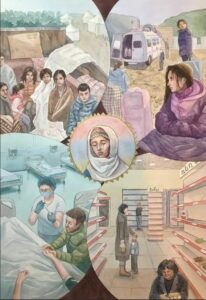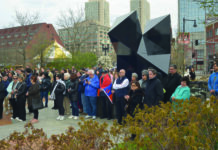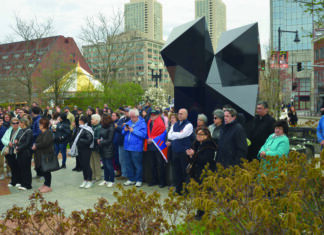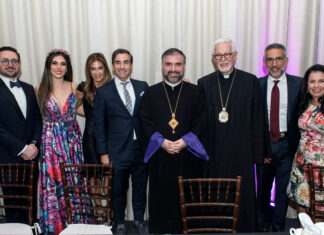By Sargis Karavardanyan
A fight against injustice, corruption and terror often leads to eruption of violent clashes. When the efforts for ending hostilities take a shape of peaceful protests by unarmed civilians of the United States, it is anticipated that the government will not interfere and silence the right to free speech granted by the Constitution. It will also be logical to expect that no interference into peaceful protests will be done by a foreign superpower that makes an official visit to a democratic powerhouse such as the United States of America.
Surprisingly, the evidence (captured on video) proves that the power of the First Amendment of the United States Constitution is vulnerable when challenged by an external force such as Turkey, whose government has faced significant criticism from Western powers for exercising autocratic practices over its subjects.
A large group of Kurdish, Greek and Armenian protesters became the first to experience the erosion of the First Amendment by a foreign government on American soil. The peaceful protests took place on May 17, 2017, in front of the Turkish ambassador’s residence. Those gathered around the residence carried the mission of inveighing the authoritarianism of President Erdogan and his domestic allies against the Kurdish minorities in Turkey.
Upon the arrival of the president of Turkey, Recep Tayyip Erdogan, who was protected by a cadre of bodyguards, mayhem erupted between the guards and unarmed protestors. The violent clash caused severe injuries such as concussion, broken bones, and cuts on various parts of bodies among women and elderly, to name but a few. The video footage captured by the eyewitnesses demonstrates how the bodyguards of the Turkey’s president viciously hit protestors. Confused by the unanticipated chaos, the victims of the brawl crawled and groveled on the ground to escape kicks and punches from the guards to their face.
The problem between Turkey and each of the aforementioned ethnic groups stretches back centuries. The conflict gained momentum in a relatively more contemporary period at the beginning of the 20th century when on the verge of the Ottoman Empire, the Turkish government planned and executed the mass elimination of ethnic Armenians, Assyrians, Greeks and Kurds between 1915 and 1923. Each of the groups protesting on May 17 had their own tragic history created by the inhumane acts of the Turkish government. The main motivation for the protestors of various ethnic groups was that both past and present wrongdoings of the Turkish state are still being practiced on innocent civilians, or have not been recognized by the government.










